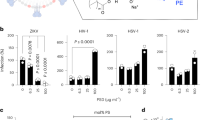Abstract
THE proposal to introduce lapinized virus as a prophylactic agent in the control of rinderpest in cattle in Nigeria has raised a number of problems associated with the maintenance of large colonies of rabbits. A survey carried out to determine the incidence of infection with E. stieœ in existing stock showed that one of the most important of these problems would be that of controlling coccidiosis among them. This survey showed that all the forty rabbits examined were passing oocysts in the fæces. As this did not appear to be an entirely satisfactory prelude to the inauguration of extensive breeding activity, it was decided to try the effects of one of our newer coccidiostatic agents, mepacrine hydrochloride, in the treatment of coccidiosis, when this, as in the case of the animals referred to above, had reached the chronic stage.
This is a preview of subscription content, access via your institution
Access options
Subscribe to this journal
Receive 51 print issues and online access
$199.00 per year
only $3.90 per issue
Buy this article
- Purchase on Springer Link
- Instant access to full article PDF
Prices may be subject to local taxes which are calculated during checkout
Similar content being viewed by others
References
Horton-Smith, C., Taylor, E. L., and Turtle, E. E., Vet. Record, 52 No. 48, 829 (1940).
Author information
Authors and Affiliations
Rights and permissions
About this article
Cite this article
UNSWORTH, K. Failure of Mepacrine Hydrochloride to eliminate Oocysts from the Fæces of Rabbits Chronically Infected with E. stiedæ. Nature 164, 958–959 (1949). https://doi.org/10.1038/164958a0
Issue Date:
DOI: https://doi.org/10.1038/164958a0
Comments
By submitting a comment you agree to abide by our Terms and Community Guidelines. If you find something abusive or that does not comply with our terms or guidelines please flag it as inappropriate.



